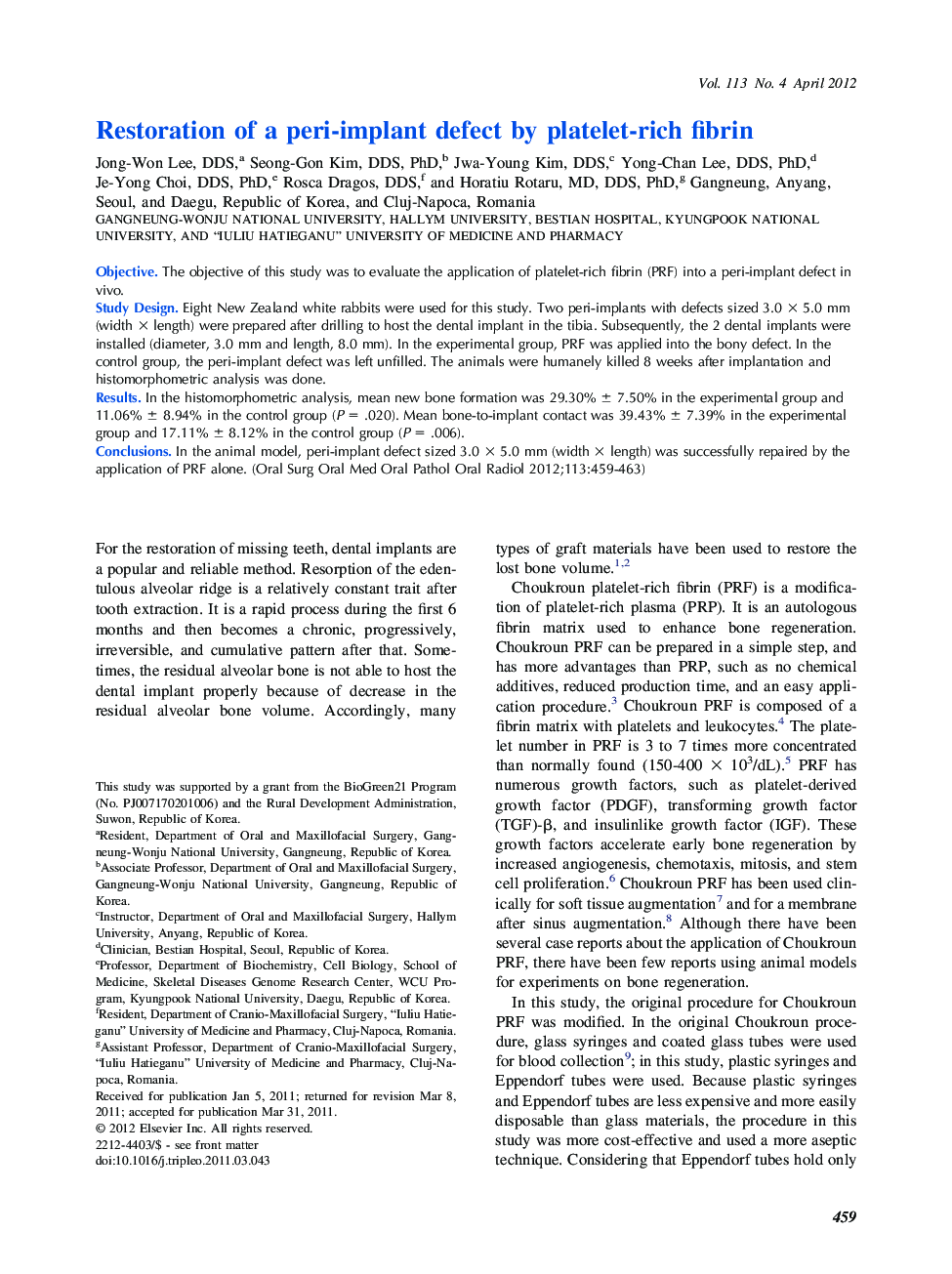| Article ID | Journal | Published Year | Pages | File Type |
|---|---|---|---|---|
| 6057647 | Oral Surgery, Oral Medicine, Oral Pathology and Oral Radiology | 2012 | 5 Pages |
ObjectiveThe objective of this study was to evaluate the application of platelet-rich fibrin (PRF) into a peri-implant defect in vivo.Study DesignEight New Zealand white rabbits were used for this study. Two peri-implants with defects sized 3.0 à 5.0 mm (width à length) were prepared after drilling to host the dental implant in the tibia. Subsequently, the 2 dental implants were installed (diameter, 3.0 mm and length, 8.0 mm). In the experimental group, PRF was applied into the bony defect. In the control group, the peri-implant defect was left unfilled. The animals were humanely killed 8 weeks after implantation and histomorphometric analysis was done.ResultsIn the histomorphometric analysis, mean new bone formation was 29.30% ± 7.50% in the experimental group and 11.06% ± 8.94% in the control group (P = .020). Mean bone-to-implant contact was 39.43% ± 7.39% in the experimental group and 17.11% ± 8.12% in the control group (P = .006).ConclusionsIn the animal model, peri-implant defect sized 3.0 à 5.0 mm (width à length) was successfully repaired by the application of PRF alone.
